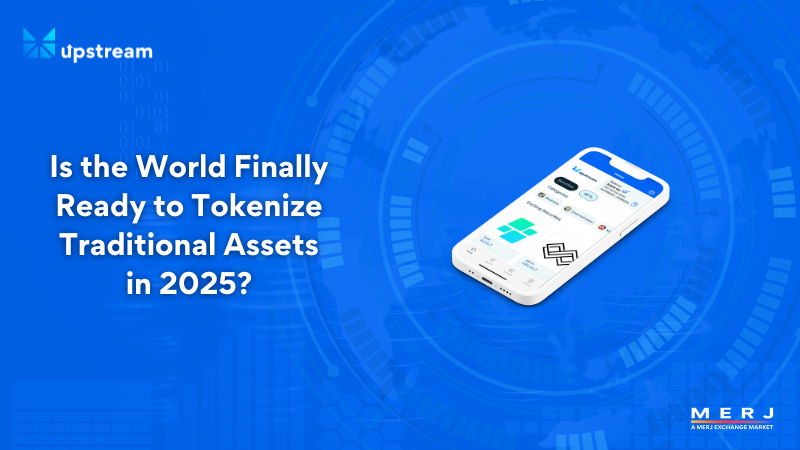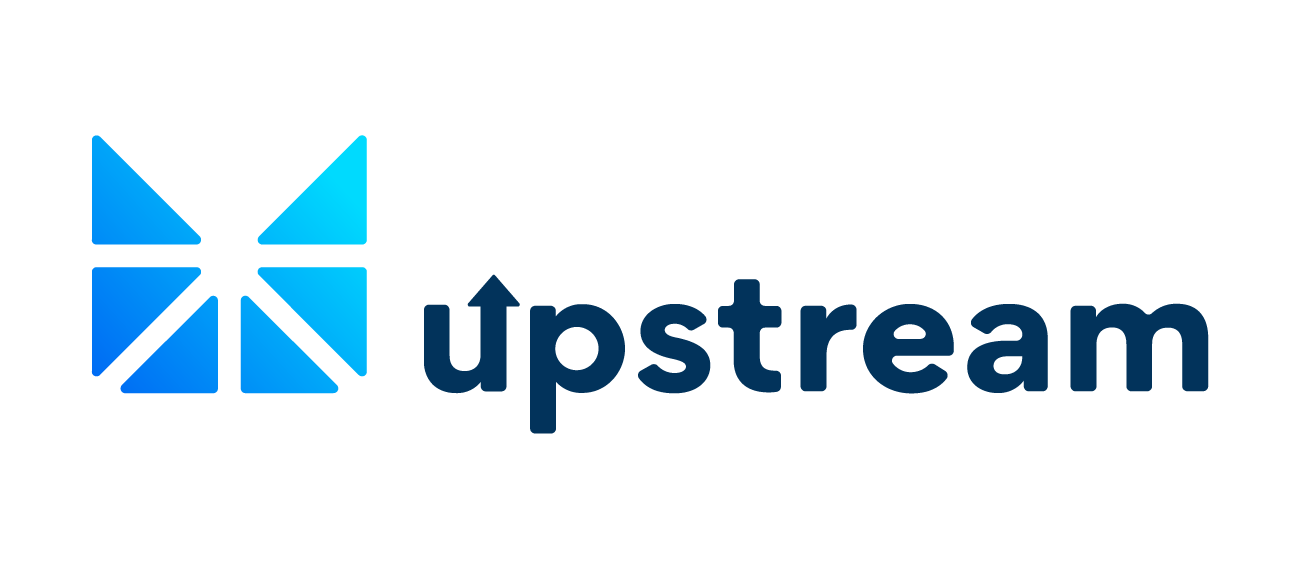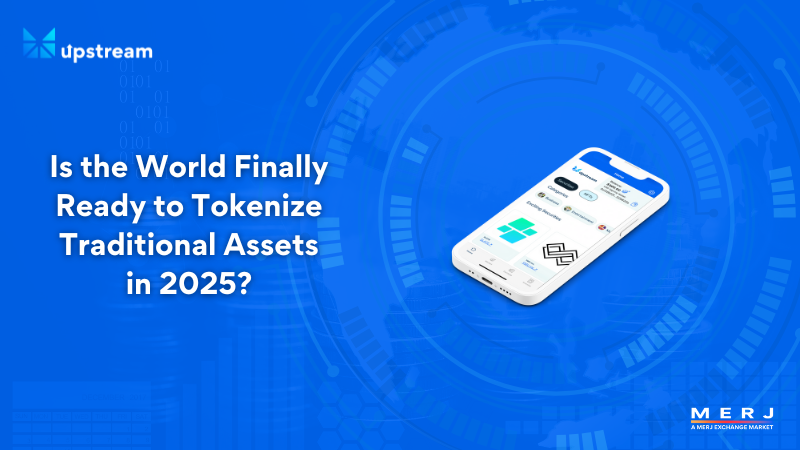
How tokenization modernizes dated concepts in traditional finance
By Vanessa Malone
The 2024 World Economic Forum (WEF), known for bringing together leaders to discuss global commerce, economic development, political concerns and social issues, highlighted blockchain’s growing role in updating existing financial systems.
One key discussion was the tokenization of physical and financial assets, signaling a promising shift toward using blockchain as a tool to modernize capital market infrastructure. We’ve been hearing “it’s the year for tokenization” for quite a few years now, so what are the key benefits that will push forward current and new projects on this front?
First, blockchain and tokenization might still sound like complex or even intimidating concepts to some, but they don’t have to be.
At their roots, it’s about using technology to create more efficient, transparent, and accessible financial systems. We believe that focusing on the practical benefits for issuers and investors, including faster settlements, reduced costs, and broader global market access, all while maintaining a familiar user experience, will be critical for wider adoption. Think of it like upgrading the engine of a classic car. Incorporating blockchain technology into capital markets can make transacting better, faster, and stronger for the long haul but can still look, feel, and drive in a way users are used to.
What dated concepts in traditional finance can tokenization address?
- Direct access. Most traditional financial platforms offer limited windows into exchanges, acting as intermediaries between users and the market. This can introduce additional layers of unnecessary complexity. Alternatively, blockchain-based markets like Upstream, part of MERJ Exchange, provides users with direct, peer-to-peer access to an exchange. This means investors transacting on the stock market can interact with each other without relying on intermediaries while having greater non-custodial control over their assets. Transactions are secured and unlocked biometrically, offering an added layer of security and user control, allowing investors to manage their assets more freely and efficiently.
- Settlement periods. Right now, trading on most traditional stock exchanges involves a T+1 settlement period, meaning that the transactions settle one business day after the trade date. On blockchain-powered trading systems like Upstream, trade executions are real-time and transparently performed on a best bid/offer basis. This reduces capital tie-ups and counterparty risk because both the trade and transfer of ownership happen immediately.
- Limited trading hours. Unlike traditional exchanges that operate during limited hours, blockchain infrastructure supports continuous, global trading. Upstream operates 20 hours a day, 7 days a week and the technology powering the market has the capability for 24/7 trading.
- Fragmented asset classes. In traditional financial markets, assets are often split across various exchanges, platforms, and systems, making it harder for investors to access a wide range of investment opportunities at a price and time accessible to them. Blockchain technology has the ability to consolidate these asset classes on markets that facilitate streamlined trading across borders. This approach allows for easier access to different asset types, such as tokenized securities, commodities, real-world assets, all on a single platform.
- Global participation. Traditional finance often leaves out smaller investors and individuals in underserved regions who lack access to banking services, user-friendly trading apps, and affordable entry points. Blockchain opens up new avenues for micro-investments. For example, on Upstream, we aim to democratize access to investment opportunities with no account minimums; fractional ownership, flexible funding methods like digital currency like USDC and USDT, debit/credit card, PayPal, and USD; and streamlined onboarding.
As we continue into 2025, we’re beginning to see new and current projects rise in popularity as the key benefits tokenization will have for issuers and investors come to light. By focusing on practical advantages and maintaining a familiar user experience, we can help users embrace tokenization as a natural evolution. Stay tuned for next week as we dive into some of the real-world tokenization efforts taking place around the globe.
Stay connected to hear about upcoming opportunities for traders on Upstream. Issuers interested in listing on Upstream can get started here. Investors (non-U.S.) can download Upstream on iOS or Android.
Note: U.S. persons may not deposit, buy, or sell securities on Upstream.
Disclaimers:
U.S. persons may not deposit, buy, or sell securities on Upstream. Anyone may buy and sell Collectibles on Upstream.
This communication shall not constitute an offer to sell securities or the solicitation of an offer to buy securities in any jurisdiction where such offer or solicitation is not permitted. Collectibles have no royalties, equity ownership, or dividends. Collectibles are for utility, collection, redemption, or display purposes only. Anyone may buy and sell Collectibles on Upstream. All orders for sale are non-solicited by Upstream and a user’s decision to trade securities must be based on their own investment judgment.
Upstream is a MERJ Exchange market. MERJ Exchange is a licensed Securities Exchange, an affiliate of the World Federation of Exchanges, a National Numbering Agency, and a member of ANNA. MERJ is regulated in the Seychelles by the Financial Services Authority, https://fsaseychelles.sc/, an associate member of the International Association of Securities Commissions (IOSCO). MERJ supports global issuers of traditional and digital securities through the entire asset life cycle from issuance to trading, clearing, settlement, and registry. It operates a fair and transparent marketplace in line with international best practices and principles of operations of financial markets. Upstream does not endorse or recommend any public or private securities bought or sold on its app. Upstream does not offer investment advice or recommendations of any kind. All services offered by Upstream are intended for self-directed clients who make their own investment decisions without aid or assistance from Upstream. All customers are subject to the rules and regulations of their jurisdiction. By accessing the site or app, you agree to be bound by its terms of use and privacy policy. Company and security listings on Upstream are only suitable for investors who are familiar with and willing to accept the high risk associated with speculative investments, often in early and development-stage companies. U.S. persons may not deposit, buy, or sell securities on Upstream. There can be no assurance the valuation of any particular company’s securities is accurate or in agreement with the market or industry comparative valuations. Investors must be able to afford market volatility and afford the loss of their investment. Companies listed on Upstream are subject to significant ongoing corporate obligations including, but not limited to disclosure, filings, and notification requirements, as well as compliance with applicable quantitative and qualitative listing standards.
Collectible products are akin to a digital sticker of an underlying artwork and should not be considered a financial investment; a security token, an e-money token, or a form of digital currency. Collectibles should not, therefore, be purchased by anyone seeking financial gain or with an expectation to profit from the purchase, ownership in the entity, dividends or distributions, sale or resale of a Collectible. By buying a Collectible, you agree that you are not doing so for investment purposes or for the purposes of obtaining a security or an appreciating asset. You understand that the benefit you receive for buying a Collectible is limited to supporting athletes, celebrities and other brands. You also acknowledge that ownership of a Collectible does not carry with it any rights, express or implied, including (without limitation) copyright, trademarks or other intellectual property or proprietary rights in and to the underlying artwork. The copyright to the digital artwork remains with the copyright holder.
Forward-Looking Statements
This communication contains “forward-looking statements.” Such statements may be preceded by the words “intends,” “may,” “will,” “plans,” “expects,” “anticipates,” “projects,” “predicts,” “estimates,” “aims,” “believes,” “hopes,” “potential,” or similar words. Forward-looking statements are not guarantees of future performance, are based on certain assumptions, and are subject to various known and unknown risks and uncertainties, many of which are beyond the Company’s control, and cannot be predicted or quantified, and, consequently, actual results may differ materially from those expressed or implied by such forward-looking statements. Such risks and uncertainties include, without limitation, risks and uncertainties associated with (i) difficulties in obtaining financing on commercially reasonable terms; (ii) changes in the size and nature of our competition; (iii) loss of one or more key executives or brand ambassadors; and (iv) changes in legal or regulatory requirements in the markets in which we operate. The Company assumes no obligation to publicly update or revise its forward-looking statements as a result of new information, future events or otherwise.

